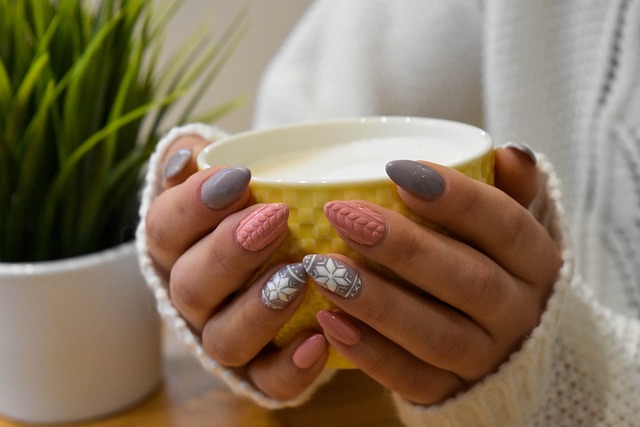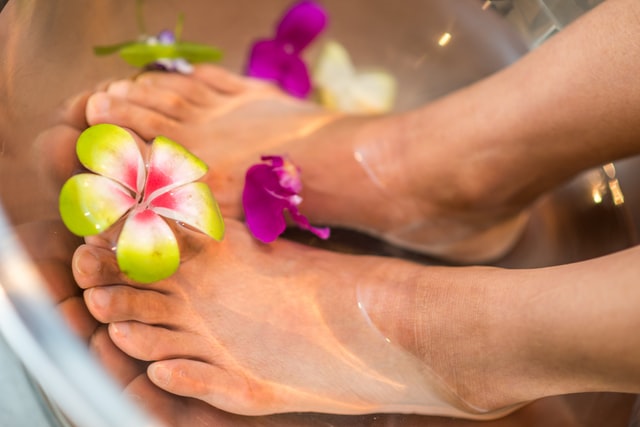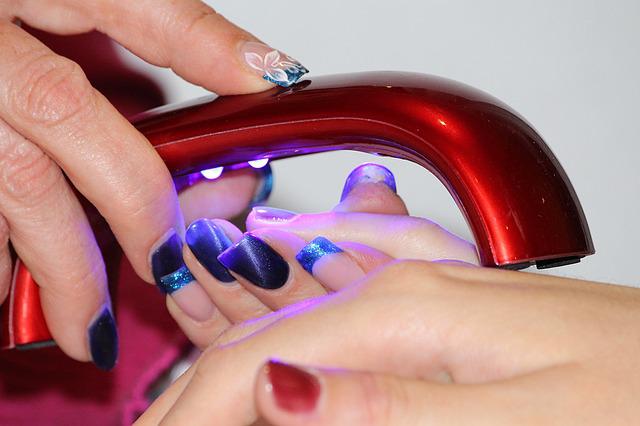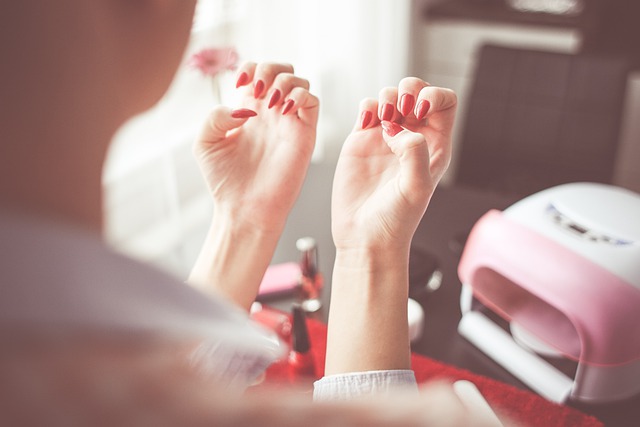To achieve perfect cuticle trimming, start by selecting sharp, stainless steel tools like cuticle nippers and scissors for precision. Always soak cuticles in warm, soapy water with essential oils to soften them before trimming. Use nippers at a 45-degree angle for control, and make small snips to avoid over-trimming. Be mindful of cuticle boundaries; avoid cutting the living skin to prevent infections. After trimming, moisturize with creams containing shea butter or glycerin to maintain hydration. Consistent care and attention to detail guarantee healthier cuticles and nails. Discover more about perfecting this essential nail-care skill.
Choosing the Right Tools
Selecting the right tools for cuticle trimming is essential for achieving neat and healthy nails. You don't want to overlook the importance of quality instruments, as they make the process smoother and more effective. Start with a good pair of cuticle nippers. Look for ones that are sharp and made of stainless steel to guarantee durability and precision. A sharp pair will give you clean cuts without tugging or tearing your skin.
Next, consider investing in a cuticle pusher. This tool helps gently push back your cuticles, so you can trim only the excess. Opt for a dual-ended pusher with a rounded edge on one side and a pointed tip on the other for versatility. The rounded side is perfect for pushing back cuticles, while the pointed end can clean under your nails.
Finally, don't forget about cuticle scissors. These are especially useful for trimming hangnails or small pieces of dead skin around the nail bed. Choose scissors with thin, curved blades for better control and precision.
Soaking for Easier Trimming
For an easier cuticle trimming process, consider starting with a relaxing soak. Soaking softens the cuticles, making them more pliable and easier to trim. You don't need anything fancy—a simple bowl of warm, soapy water will do wonders. Aim for a soak time of about five to ten minutes to guarantee your cuticles are adequately softened. This step not only eases the trimming process but also adds a calming touch to your routine.
Here's how to make your soaking experience more effective:
- Add essential oils: A few drops of lavender or tea tree oil can enhance the soothing properties of your soak.
- Use a moisturizing soap: Opt for a mild soap with moisturizing properties to prevent your skin from drying out.
- Include Epsom salt: This can help relax your hands and soften your cuticles further.
- Try a DIY soak: Mix warm water with apple cider vinegar for extra benefits; it softens cuticles and has antibacterial properties.
After your soak, gently pat your hands dry with a towel. You'll notice your cuticles are now softer and more manageable, setting the stage for a successful trimming session.
Identifying Cuticle Boundaries

How do you know where to trim and where to stop? Identifying cuticle boundaries is key to achieving a neat and healthy look without causing damage. First, recognize that the cuticle is the thin layer of dead skin at the base of your nail, acting as a barrier against bacteria. It's crucial you only trim the excess cuticle, not the living tissue beneath.
Start by examining your nails closely. After soaking your nails, gently push back the cuticles using a cuticle pusher. This step will help you identify where the dead skin ends and the living skin begins. You'll notice a clear demarcation line between the two. The area that appears dry or flaky is typically the cuticle you can safely trim.
Be cautious of the eponychium, which is the living skin right above the cuticle. Don't cut into this area, as it can lead to infection or discomfort. If you're unsure, err on the side of caution and trim less rather than more. It's better to have a bit of excess than to risk cutting into live skin. Always verify your tools are sharp and clean for precise trimming.
Proper Cutting Techniques
When it comes to proper cutting techniques, precision is your best friend. Start by making sure you have the right tools. A high-quality cuticle nipper with sharp blades is essential. Before you begin, soak your fingers in warm soapy water for a few minutes to soften the cuticles. This makes them easier to cut and reduces the risk of tearing. Pat your fingers dry, but leave them slightly damp for easier trimming.
Hold the nipper like a pen, and position the blades at a 45-degree angle to the cuticle line. This angle gives you control and visibility, allowing you to make clean cuts without damaging the surrounding skin. Always trim in small, gentle snips to avoid removing too much at once. Aim to cut only the dead skin that's raised above the nail plate.
Here's a quick checklist to keep you on track:
- Use sharp, clean tools: Dull or dirty blades can cause more harm than good.
- Work in good lighting: Proper visibility guarantees accuracy.
- Cut slowly and steadily: Rushing increases the risk of mistakes.
- Be mindful of angles: The right angle prevents unnecessary skin damage.
Avoiding Over-Trimming

Having mastered proper cutting techniques, it's important to now focus on avoiding over-trimming. Over-trimming can lead to discomfort, infection, and an unsightly appearance. Start by evaluating your cuticles' condition. If they look dry or frayed, it might be tempting to trim more than necessary, but resist that urge. Only remove the dead skin and hangnails visible to you.
Use a cuticle pusher to gently push your cuticles back before trimming. This step helps define the line between living tissue and dead skin, reducing the risk of cutting too much. Keep your trimming tool sharp and clean. Dull tools can tug and damage the skin, causing you to unintentionally remove more than intended.
While trimming, maintain a steady hand and use small, precise snips. Don't rush the process. Pay attention to the natural shape of your nail beds and follow that curve. If you're unsure whether to remove a piece, err on the side of caution and leave it. You can always trim more later if necessary.
Finally, listen to your body's signals. If you feel pain or see redness, you've likely over-trimmed. Stop immediately to prevent further damage.
Moisturizing After Trimming
After trimming your cuticles, it's important to moisturize them to maintain their health and appearance. Moisturizing helps prevent dryness, cracking, and irritation, ensuring your cuticles look neat and tidy. Start by choosing a good hand cream or lotion, preferably one that contains ingredients like shea butter or glycerin, which provide intense hydration. Apply a generous amount, focusing on the base of your nails where the cuticles reside. This step not only keeps your cuticles soft but also supports nail growth.
When moisturizing your cuticles, remember these key points:
- Consistency is key: Make moisturizing a daily habit to maintain smooth, healthy cuticles.
- Pay attention to ingredients: Opt for products free from harsh chemicals that could further dry out your skin.
- Massage thoroughly: Massaging the moisturizer into your cuticles stimulates blood flow and enhances absorption.
- Use a specialized hand cream at night: Apply a thicker cream before bed, allowing it to work overnight.
Using Cuticle Oils

Beyond regular moisturizing, incorporating cuticle oils into your routine can greatly enhance the health of your nails and cuticles. Cuticle oils are specially formulated to penetrate deeper, delivering intense hydration and nourishment right where it's needed most. By using cuticle oils, you're not only keeping the skin around your nails soft and pliable, but you're also preventing hangnails and other common issues.
To make the most of cuticle oils, apply a small amount to each nail and gently massage it in. This massaging action boosts circulation, encouraging healthy nail growth. It's best to use cuticle oil daily, preferably at night, so it can work its magic while you sleep. Choose oils rich in vitamins and essential fatty acids, like jojoba or vitamin E, for best results.
Consistency is key. Even if you skip a day of moisturizing, try not to skip the cuticle oil. Over time, you’ll notice your nails becoming stronger and less prone to breaking. Plus, healthy cuticles contribute to a more polished and well-groomed appearance, which is always a bonus. With regular use, cuticle oils can transform your nail care routine, leaving you with beautiful, resilient nails. Incorporating cuticle oil into your daily routine can work wonders not just for your nails, but also for your overall nail health. Remember to follow up your cuticle oil application with some moisturizing tips for healthy nails, such as applying a nourishing hand cream or using gloves while doing dishes to protect against harsh chemicals. By paying attention to both your cuticles and the surrounding skin, you’ll create the perfect environment for gorgeous nails to thrive.
Addressing Common Mistakes
Maneuvering the world of cuticle care can sometimes lead to common mistakes that may hinder your nail health. It's easy to overlook certain details, but being aware of them can greatly improve your cuticle trimming routine. One frequent mistake is trimming too much. Over-trimming can cause damage and lead to infections. Instead, focus on removing only the dead skin to maintain a clean look.
Another mistake is using the wrong tools. Dull or inappropriate tools can tear the skin and cause discomfort. Invest in high-quality, sharp cuticle nippers for better results.
Consider these common mistakes:
- Skipping Softening Steps: Always soften your cuticles before trimming. It makes the process easier and reduces the risk of injury.
- Ignoring Hygiene: Failing to sanitize your tools can introduce bacteria, leading to infections.
- Rushing the Process: Take your time. Rushing can lead to uneven cuts and potential injuries.
- Using Excessive Force: Gentle pressure is key. Applying too much force can damage your nail bed.
Maintaining Healthy Cuticles

When it comes to maintaining healthy cuticles, consistency is key. You need to make a habit of nurturing them regularly to prevent dryness and damage. Start by moisturizing your cuticles daily. Use a cuticle oil or a rich hand cream, especially after washing your hands or showering. Keeping them well-hydrated helps prevent them from becoming brittle or cracking.
Another essential step is to protect your cuticles from harsh chemicals. When cleaning or doing dishes, wear gloves to shield them from detergents and cleaning agents. These chemicals can strip away natural oils, leaving your cuticles dry and more prone to damage.
Avoid biting or picking at your cuticles. This can lead to painful tears and even infections. Instead, if you notice any hangnails or rough edges, use a cuticle trimmer or a nail file to gently smooth them out.
Lastly, make certain you're eating a balanced diet rich in vitamins and minerals. Nutrients like vitamin E, biotin, and omega-3 fatty acids contribute to healthy nails and cuticles. Incorporate foods such as nuts, eggs, and fish into your meals to support your cuticle health from the inside out.
Regular Cuticle Care Practices
To guarantee your cuticles remain healthy, adopting regular care practices is essential. By incorporating these habits into your routine, you'll keep your cuticles in top condition and prevent issues like dryness, hangnails, or infections. Start by moisturizing your cuticles daily. Use cuticle oil or a rich hand cream, especially after washing your hands, to keep them soft and hydrated. This simple step prevents cracking and peeling.
Next, push back your cuticles gently instead of cutting them. Use a cuticle pusher after a shower when your skin is softer. This helps maintain a neat appearance without risking injury or infection. Regularly inspect your cuticles for signs of damage or infection, such as redness or swelling, and address any issues immediately to prevent further complications.
Here are a few practices to integrate into your routine:
- Moisturize daily: Hydrate your cuticles with oils or creams.
- Push, don't cut: Use a cuticle pusher for gentle maintenance.
- Inspect regularly: Check for signs of damage or infection.
- Avoid harsh chemicals: Protect your hands with gloves during cleaning.
Frequently Asked Questions
Can Cuticle Trimming Help Prevent Nail Infections?
Yes, trimming cuticles can help prevent nail infections. You remove dead skin that can harbor bacteria. Be gentle to avoid cuts. Always use clean tools, moisturize afterward, and don't trim too much to maintain nail health.
Are There Any Risks Associated With Trimming Cuticles Too Often?
You might worry that trimming cuticles too often isn't harmful, but it can lead to infections and damage. When you trim too much, you expose sensitive skin and increase infection risk, so moderation is key.
How Can Diet Impact the Health of My Cuticles?
Your diet impacts cuticle health by providing essential nutrients. Eat foods rich in vitamins A, C, E, and biotin to strengthen and nourish your cuticles. Hydration is key, so drink plenty of water to maintain cuticle moisture.
What Are the Signs of an Allergic Reaction to Cuticle Products?
When your cuticles scream like a fire alarm, watch for redness, swelling, or itching. If they're throwing a tantrum, blistering or peeling might join the party. Stop using the product and consult a healthcare professional.
Can Trimming Cuticles Improve Nail Growth Speed?
Trimming cuticles doesn't directly speed up nail growth. However, it can enhance nail appearance and prevent hangnails or infections, indirectly promoting healthier growth. Focus on maintaining healthy cuticles for overall nail health and aesthetic appeal.
At a Glance
Did you know that maintaining healthy cuticles can reduce hangnails by up to 50%? By choosing the right tools, soaking your nails, and applying proper cutting techniques, you're already halfway to perfect cuticle care. Remember to avoid over-trimming and always use nourishing cuticle oils. Stay mindful of common mistakes and establish regular care practices to keep your cuticles in top shape. With these steps, you're well on your way to flawless nails and healthier cuticles.






